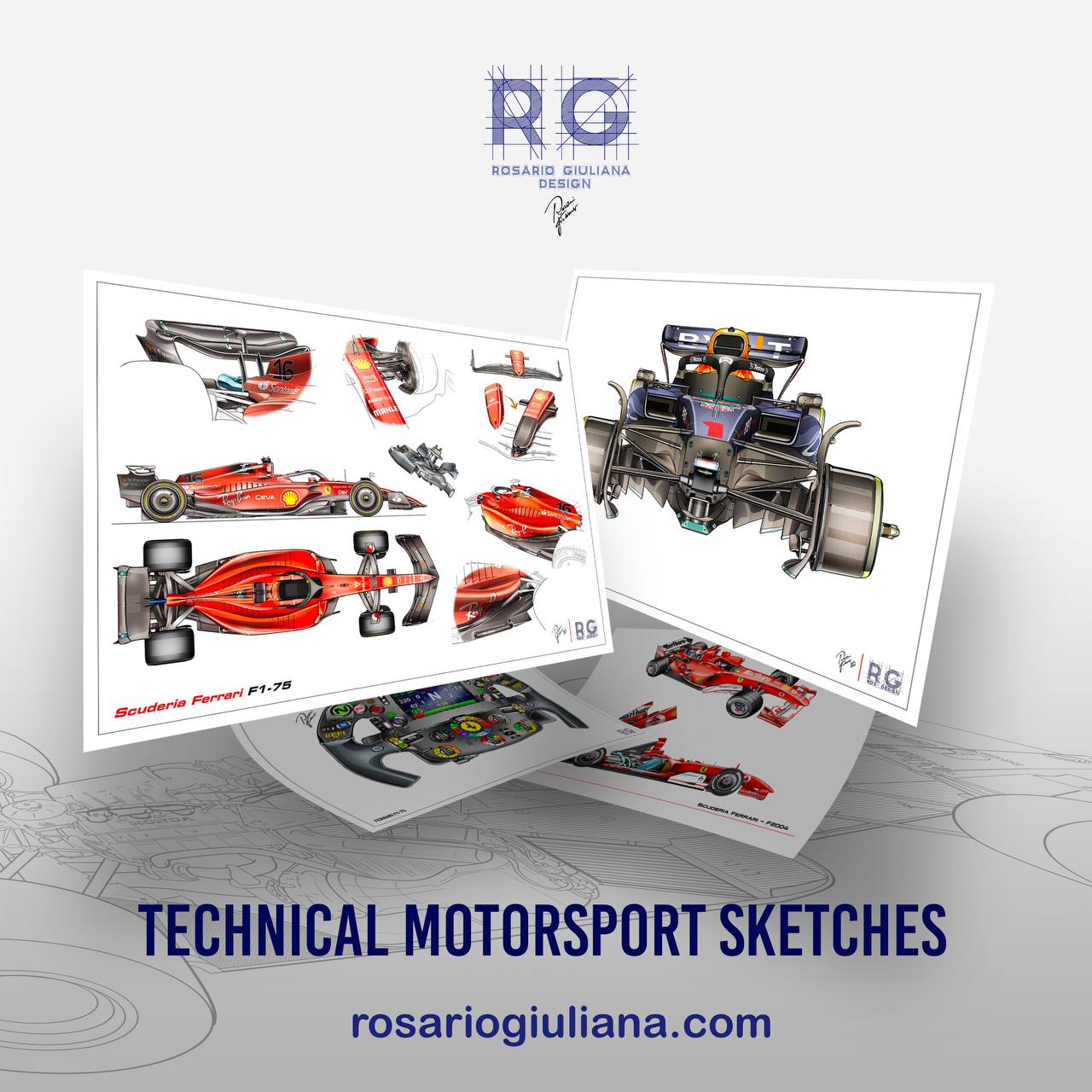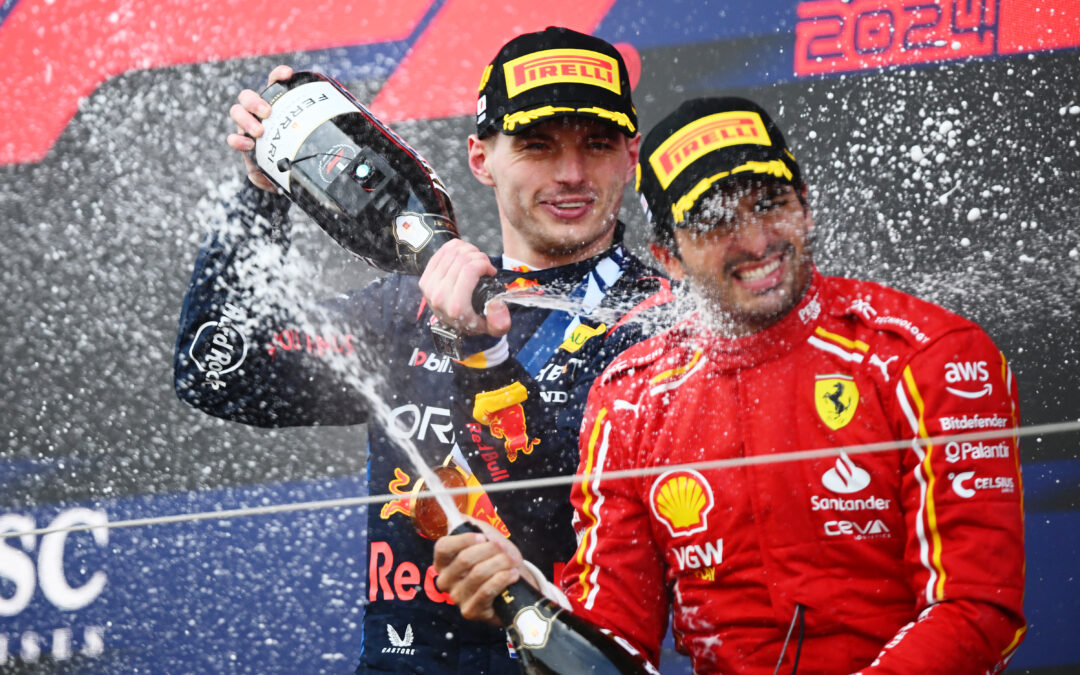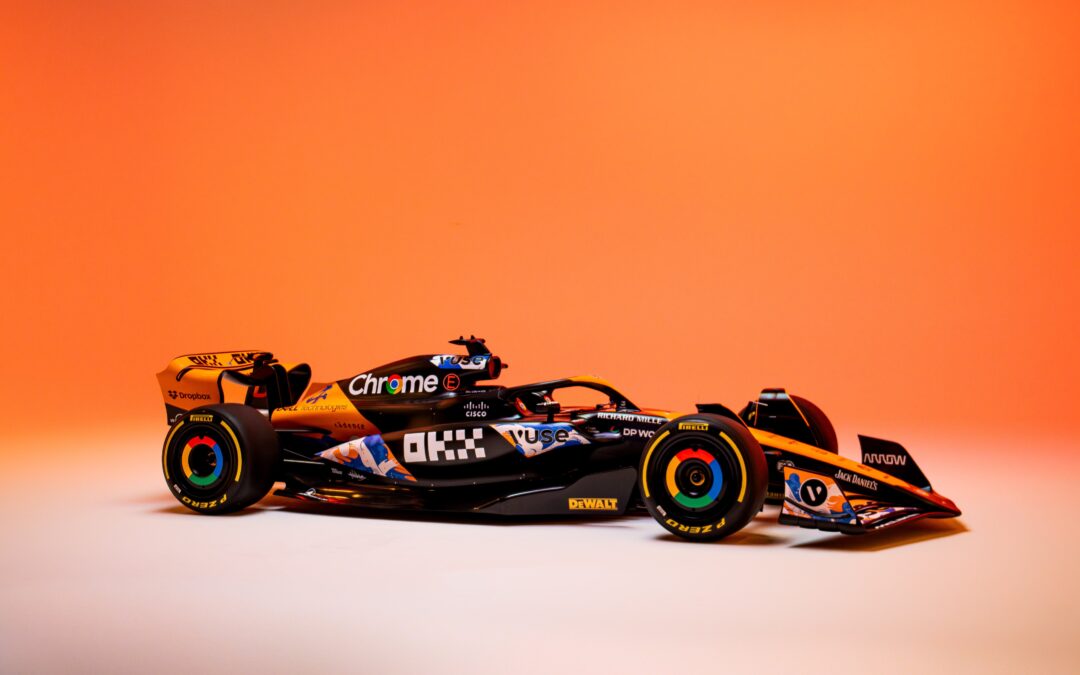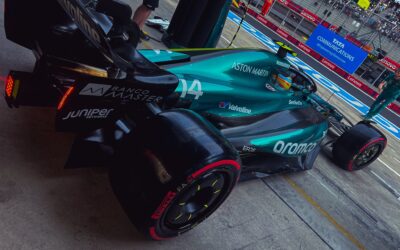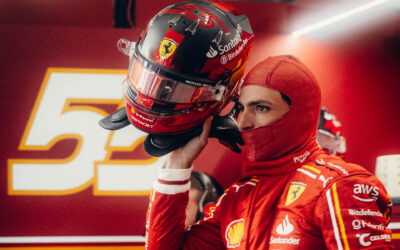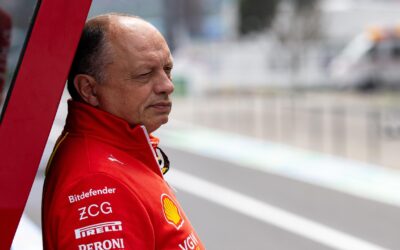The Alpine A523 was the last car 2023 F1 car to be unveiled – even if Red Bull’s launch did not show the actual RB19. The French team organized an important event in London featuring a surprise new ambassador – Zinedine Zidane.
However, the most important figures in the Formula 1 launch were obviously Esteban Ocon and Pierre Gasly, who were accompanied by Team Principal Otmar Szafneur and CEO Laurent Rossi. The presentation was also an opportunity to hear the Enstone team’s technical director, Matt Harman, who explained the work done on the Alpine A523, which is an evolution of last year’s car.
Alpine A523: A revised front wing and suspension
“The A523 project was born in November 2021, even before the A522 was launched. This year’s car is a significant evolution of that, which has also been influenced by what we learned last season”, said the Alpine Technical Director.
Great attention has been paid to the rear area of the car, but this does not mean that the front has remained untouched. The reality is to the contrary.
The front wing has a different design, confirming the trend of a more loaded internal part designed to achieve a more extreme outwash effect on the endplates.
The muzzle has been redesigned and is now longer and flatter. This new design provides Alpine with “more freedom to change the elements of the front wing, as well as faster, and allows us to control the flow more consistently in the area of the front suspension”.

Interesting work was also carried out in the area of the front suspension, an area that has been heavily explored by many teams on their 2023 cars.
Alpine maintains the general layout seen in 2022, with the pushrod system fitting adjacent to the cooling intake and the steering being placed very high at the level of the upper triangle.
However, the latter has undergone a significant change in the rear arm, which has been moved lower and inclined to create an important aerodynamic downwash effect of the flow.
The goal is to perfect the flow of arriving at the entrance to the Venturi Canals. Harman confirms this intention:
” (…) We changed the position of the triangles quite significantly to help the flow pass through this area and make sure it gets to the bottom entrance correctly, making sure to balance how much air travels above and below the bottom and towards the speaker.
“We always check the distribution of how much flow goes to the rear of the car and how much of it is pushed out of the outwash.”
Alpine A523: New rear suspension to reduce weight while the rear wing and beam wing are more efficient
The work done at the suspension level can have two main benefits: mechanical and aerodynamic.
Mechanically, it is always difficult to find significant gains, but if this modification works to improve aerodynamic function, then further gains can be achieved.
Returning to the rear, here it is crucial to direct the airflow around the car, which then reaches the area of the extractor.
This is a rather neuralgic part of the car, where Alpine has made significant changes, including a ‘revolution’ of the suspension system, passing to the push rod version, and therefore having the same suspension systems as the Alfa Romeo C43.
However, Matt Harman made no secret that another reason that led to this choice was to be able to reduce weight “(…) we had an interesting concept last year, but what we have now adopted is simpler and has allowed us to reduce weight.”
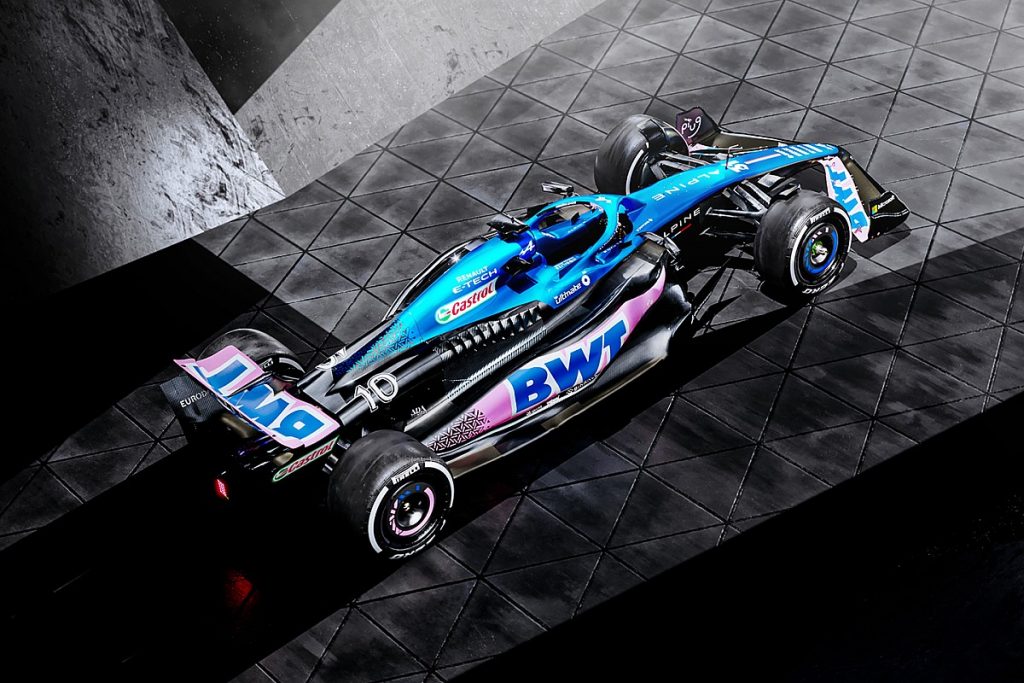
This change was also implemented to have a cleaner aerodynamic area. Lastly, work was done to better utilise the suspension, which has evolved to facilitate the setup work of the technicians on the track.
“The new suspension specification allows us to have more modularity on the track and have more options for perfecting the balance,” explains the French team’s Technical Director.
In addition to the suspension at Enstone, the team worked – together with the Viry Chatillon engine department – to optimize the entire terminal part of the car and find greater aerodynamic efficiency of the rear wing and the beam wing.
This is not only thanks to purely aerodynamic interventions – with the bonnet that also follows the philosophy introduced at Silverstone by Red Bull, with a tray that directs the flows towards that area between the upper part of the beam wing and the lower part of the rear wing – but also with major work done on the Power Unit and the cooling system.
Alpine A523: revised Power Unit cooling system to improve reliability and power
The Power Units, as known, are frozen until the introduction of the new regulation in 2026. Despite this, however, the engine manufacturers still have the right to intervene for reliability reasons – subject to the consent of the FIA - and these minor interventions can always be the difference in F1.
Much like Ferrari, Alpine prioritized power last year to postpone the work on refining reliability to the following seasons. One of the biggest problems was found in the water pump, which, for the 2023 season, has been redesigned with a less extreme philosophy.
In theory, this should have solved the important problems that emerged last season. They remain confident about the work done by the technical department of Viry Chatillon and by Bruno Famin and his men di lui in Alpine, hearing Harman’s words:
“We recently ran the car on a dynamic bench covering a significant mileage, and that test was very positive. So there’s a lot of confidence in that aspect.”

Important changes have also been made to the cooling system. On the Alpine A523, the overall dimensions in the central part of the single-seater have been reduced to become more efficient, thanks to a smaller and more efficient cooling system.
This should make it possible to better direct the car’s cooling to the benefit of aerodynamics, where the intention will be to increase downforce without increasing drag.
What’s more, Alpine has “also managed to reduce the plenum temperature for the engine, which gives us not only an aerodynamic advantage but also more horsepower.” However, this temperature will be scrutinised and controlled by the FIA, who have imposed a minimum value associated with the ambient temperature in the specific Grand Prix.
Compared to 2022, work has also been focused on better interaction between the Power Unit and the chassis. which were the cause, in addition to the water pump, of the reliability problems that occurred last season.
This is fundamental for the team to achieve its team’s ambitions, which have been outlined by Alpine CEO Laurent Rossi:
“We want to keep the fourth place, but with more podiums and fewer retirements”. The two factories have carried out important work on improving the interaction between PU and chassis, with the aim of better reliability and driveability.
Alpine A523: Already below the minimum weight, allowing more freedom to develop
Last year, weight was something of a redundant theme in the analysis carried out by both Formula 1’s experts and – above all – the teams themselves.
We have seen how many cars, including the Alpine itself, maximize the use of exposed carbon, foregoing paint, to save weight. Yesterday, Matt Harman proudly underlined how the French team has already achieved an important goal with the Alpine A523 – to reduce its weight.
The new car is already below the minimum weight imposed by the regulations, 798kg, which will allow the team to use ballast (adding weight to the car) to improve its balance.
This is an advantage that Alfa Romeo exploited in an important way at the start of the season, surprising its rivals with great performance and advantages also in terms of tire use.
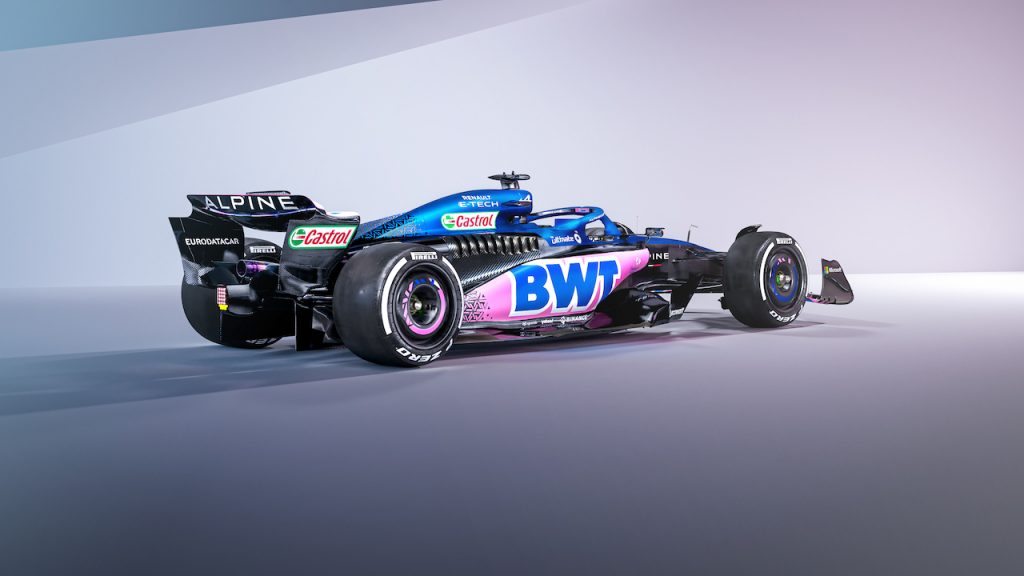
The technical department will be able to concentrate fully on a development program aimed at improving performance, with some ideas already in the works.
One of the areas where they plan to make changes is in the central part of the car. The more advanced positions of the sidepods are already visible on the A521 compared to 2022, with the entrance positioned on the sides of the driver’s cockpit, elongated in its shape and maintaining the ‘excavation’ that was introduced at Silverstone.
“Last year, we developed the sidepods a lot, and we intend to continue this year with an even more aggressive development program than 2022, which we were already pleased with”, revealed Matt Harman.
“The fund will be another area where we will concentrate our efforts. The FIA modifications caused some downforce to be lost, but our aerodynamic department was able to quickly recover it”, he concluded.
Author: Paolo D’Alessandro
Co-Author: Andrea Vergani
Translation: Jaden Diaz-Ndisang


